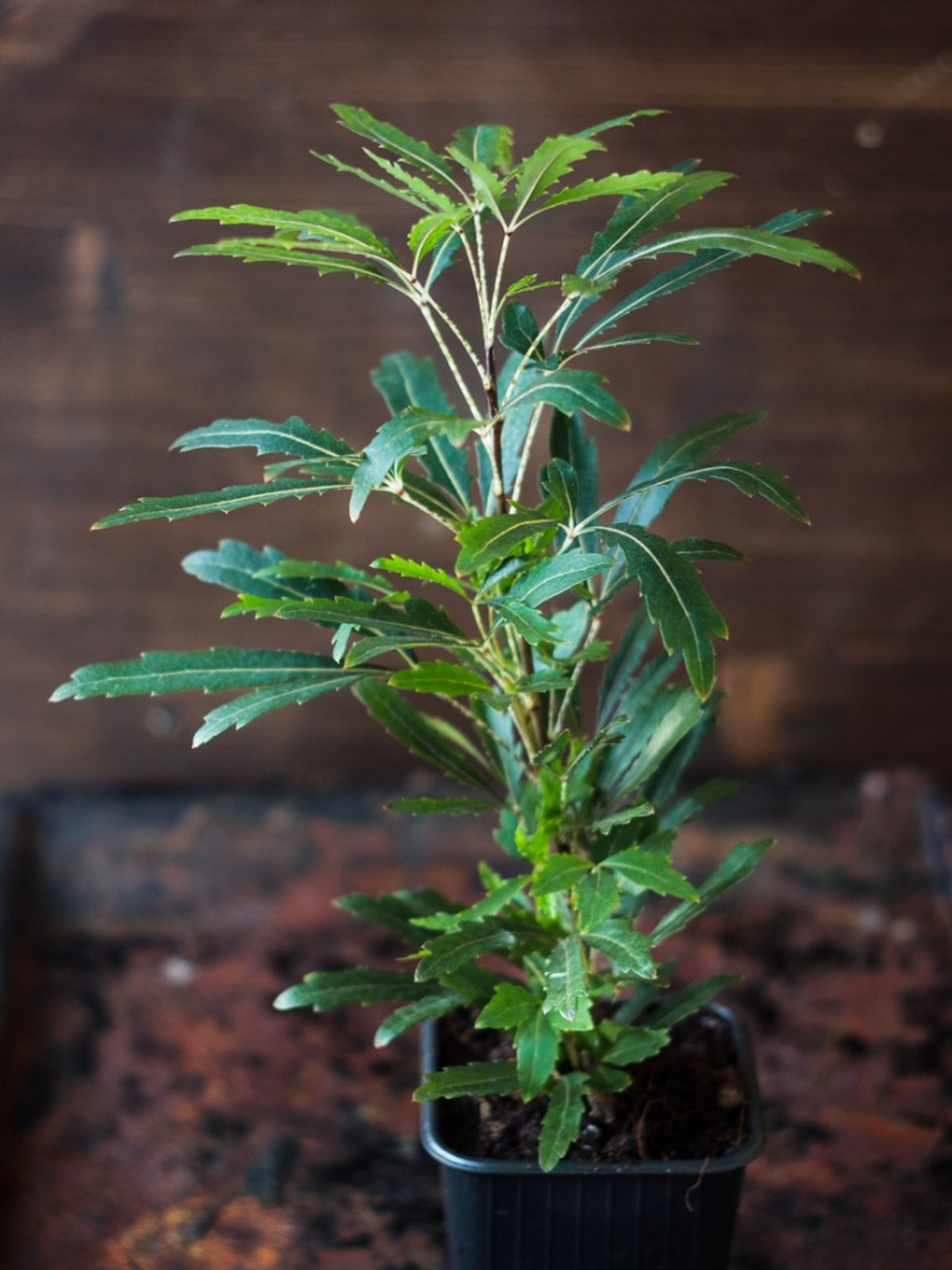False Aralia Information - How To Grow A False Aralia Houseplant


False aralia (Dizygotheca elegantissima), also known as spider aralia or threadleaf aralia, is grown for its attractive foliage. The long, narrow, dark green leaves with saw-tooth edges are coppery colored at first, but as they mature they turn dark green, appearing almost black on some plants. Bright light causes dark, blackish-green color on mature leaves. False aralia is usually purchased as a tabletop plant, but with proper care, it can grow 5 to 6 feet (1.5 to 2 m.) tall over a period of several years. Let's find out more about the care of false aralia plants.
False Aralia Information
False aralia is native to New Caledonia. The lower foliage bears a strong resemblance to marijuana, but the plants are not related. Although you can grow them outdoors in USDA plant hardiness zones 10 and 11, they are grown as houseplants in most parts of the country. You can also grow them in outdoor pots, but they are difficult to acclimate to indoor conditions after spending a summer outdoors.
False Aralia Care Instructions
Place the false aralia houseplant near a sunny window where it will receive bright to moderate light, but where the sun's rays never fall directly on the plant. Direct sun can cause the leaf tips and edges to turn brown. You don't have to adjust the thermostat when growing false aralia indoors because the plant is comfortable at ordinary room temperatures of between 65 and 85 F. (18-29 C.). Be careful not to allow the plant to become chilled, however. The foliage suffers damage when temperatures fall below 60 F. (15 C.). Care for false aralia plants includes regular watering and fertilizing. Water the plant when the soil is dry at a depth of 1 inch (2.5 cm.). Drench the pot with water and empty the saucer under the pot after the excess drains through. Fertilize every two weeks with liquid houseplant fertilizer in spring and summer and monthly in fall and winter. Repot false aralia annually in spring using general purpose potting soil and a pot just big enough to accommodate the roots. False aralia likes a tight pot. Since you will be growing a top-heavy plant in a relatively small container, choose a heavy pot or place a layer of gravel in the bottom to add weight and keep the plant from toppling.
False Aralia Problems
False aralia doesn't like to be moved. A sudden change in location causes the leaves to drop off. Make environmental changes gradually and try not to move the plant in winter. Spider mites and mealybugs are the only pests of concern. A severe spider mite infestation can kill the plant. Wipe the undersides of the leaves with a soft cloth dipped in insecticidal soap and mist the plant twice daily for a week. If the plant doesn't show signs of recovery after a week, it is best to discard it. Handpick as many of the mealybugs from the plant as possible. Treat the areas near the base of the leaves with a cotton swab dipped in alcohol every five days, especially where you see the cottony masses of insects. Insecticidal soap is helpful when mealybugs are in the crawling stage, before they attach to the foliage and assume their cottony appearance.
Sign up for the Gardening Know How newsletter today and receive a free copy of our e-book "How to Grow Delicious Tomatoes".

Jackie Carroll has written over 500 articles for Gardening Know How on a wide range of topics.